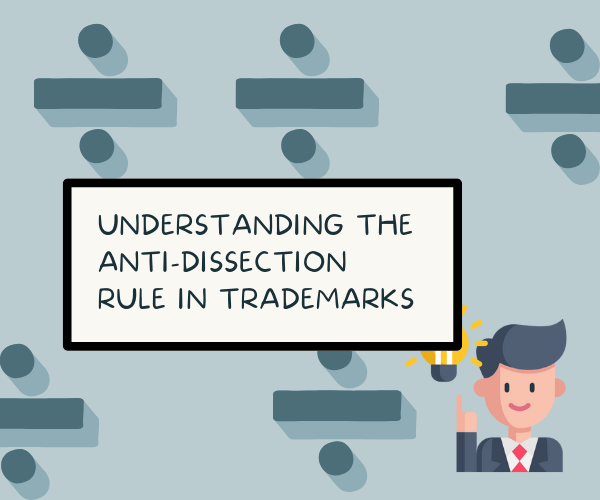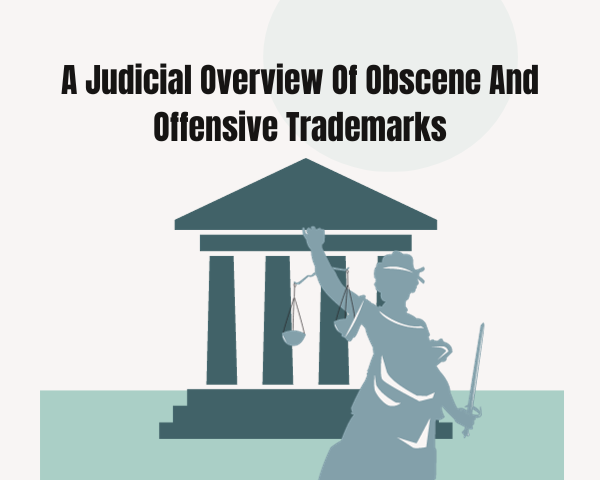A trademark serves as a safeguard for a novel meaning assigned to an existing word or the creation of a new word linked to a product or service. However, a significant challenge in the realm of trademarks arises from the potential likeness between different trademarks.
The fundamental requirement of a trademark is to prevent public confusion regarding its products, necessitating distinctiveness. Once a person is granted a trademark, they gain exclusive rights to its usage. In case of infringement by an identical or similar trademark, the trademark holder has the right to seek an injunction against the infringing party. Hence in order to determine the similarity between the conflicting marks the Rule of Anti- Dissection is followed. The Anti-Dissection Rule is a theory in Trademark Law dictating that when there exists conflicting marks they must be looked at in their entirety or based on how the customers regard the conflicting marks and not individual elements therein. This rule is grounded in the idea that a mark, when viewed in its entirety, has a greater potential to make a lasting impression on customers compared to when looked at individually.
Renowned trademark expert McCarthy emphasizes the rationale behind the Anti-Dissection Rule, emphasizing the importance of evaluating trademarks based on their commercial impression on consumers. According to McCarthy on Trademarks and Unfair Competition, he views that the trademark must be looked at in its entirety based on the commercial impression of a product’s trademark on the customer. This is justified by the fact that when an issue of conflicting marks occurs, one must look at the marks in their entirety rather than splitting them separately, as the customer perceives the trademark as a whole and not separately.
The essence of the Anti-Dissection Rule lies in the belief that a trademark, when assessed as a whole, has a more significant impact on consumers than when its components are examined separately. This approach is customer-centric, acknowledging that ordinary consumers do not retain information about a trademark’s separate elements but rather perceive it as a unified whole.
In the recent case of Bennet, Coleman And Company Ltd V. Fashion One Television LLC And Anr., the court exemplifies the application of the Anti-Dissection Rule. The plaintiff, in this case, contested the Respondent on the usage of the dominant feature of their trademark “NOW” as it has been registered under the plaintiff for several services such as ‘TIMESNOW’, ‘MIRRORNOW’, ‘ROMEDY NOW’ etc. under class 38.
The plaintiff argued that the respondent infringed upon their family of marks by employing ‘FASHION NOW’ within the same class. The court asserted that any viewer watching the respondent’s channel ‘Fashion NOW’ would likely link it to the petitioner’s channels such as ‘TIMES NOW,’ ‘MIRROR NOW,’ ‘ROMEDY NOW,’ demonstrating the petitioner’s substantial influence over the term ‘NOW.’ This indicates that the court acknowledged and considered the principles of the Anti-Dissection rule, taking into account its rationale in understanding customer behaviour. Consequently, the court ruled in favour of the petitioner, as the viewer associated the predominant term “NOW” with the petitioner’s channel.
In conclusion, the Anti-Dissection Rule serves as a crucial guideline in trademark law, ensuring a comprehensive assessment of trademarks to safeguard their distinctiveness and prevent confusion among consumers. Courts, in applying this rule, prioritize the holistic perception of trademarks by customers, thereby upholding the integrity of the trademark system.
*Written by Pranjali G Hegde, Legal Intern @Intepat IP




